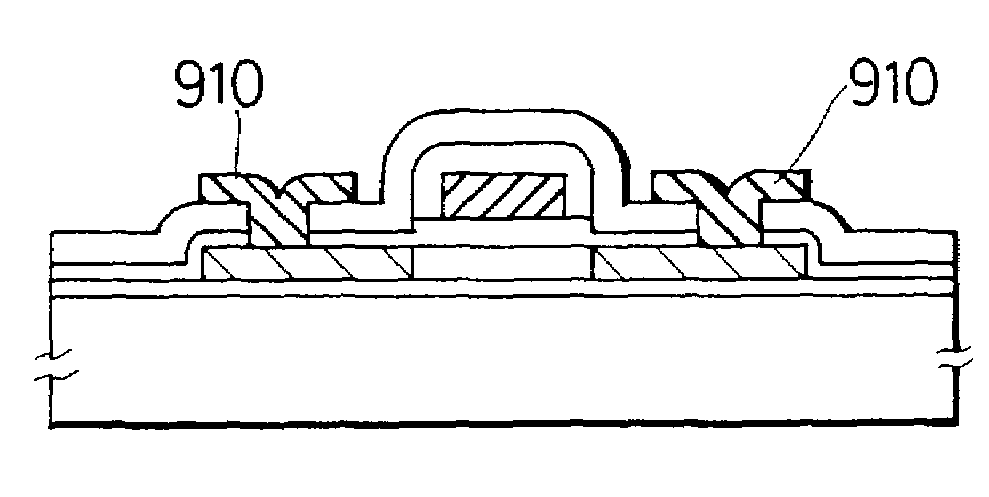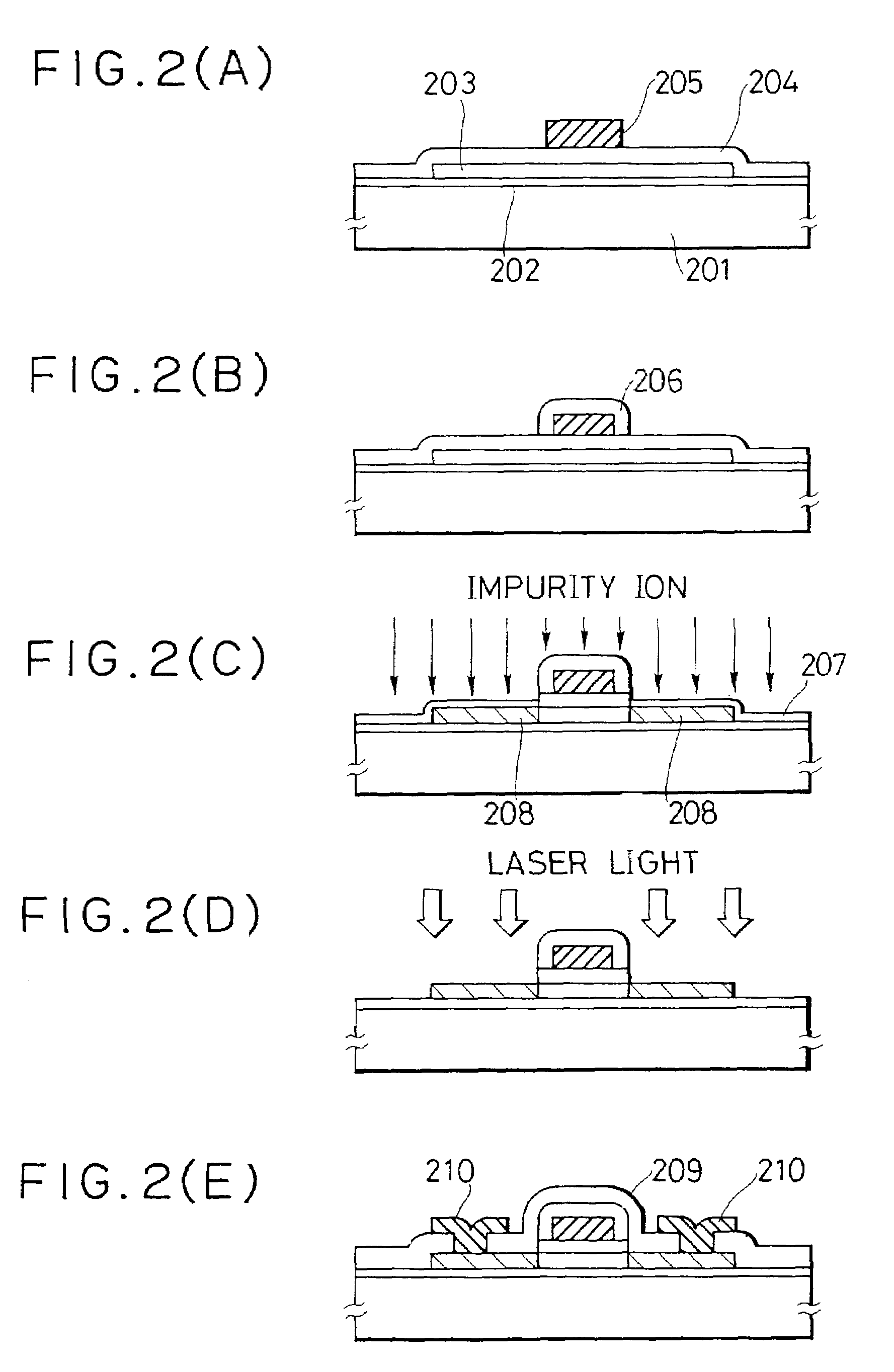Method of fabricating a MIS transistor
- Summary
- Abstract
- Description
- Claims
- Application Information
AI Technical Summary
Benefits of technology
Problems solved by technology
Method used
Image
Examples
example 1
[0028]The present example is illustrated in FIGS. 1(A)-1(E). Silicon oxide was deposited as an insulating base film 102 having a thickness of 1000 Å on a non-alkali glass substrate 101 made of Corning 7059 or the like. A substantially intrinsic amorphous silicon film having a thickness of 1500 Å was formed on the insulating film 102. This amorphous film was annealed at 600° C. for 12 hours to crystallize this film. This crystallized film was photolithographically patterned into island-shaped semiconductor regions 103. A silicon oxide film 104 having a thickness of 1200 Å was deposited as a gate-insulating film. Gate electrodes 105 having a thickness of 6000 Å were fabricated from aluminum (FIG. 1(A)).
[0029]Then, the gate electrodes were anodized to form an anodic oxide 106 on the top and side surfaces of the gate electrodes and conductive interconnects. The method of fabricating such an anodic oxide and its merits are described in detail in above-cited Japanese Patent application Se...
example 2
[0034]The present example is illustrated in FIGS. 2(A)-2(E). Silicon oxide was deposited as an insulating base film 202 having a thickness of 1000 Å on a sheet of non-alkali glass 201. A substantially intrinsic amorphous silicon semiconductor film having a thickness of 500 Å was formed on the insulating film 202. The amorphous semiconductor film was illuminated with KrF laser light to crystallize the film. Preferably, the energy density of the laser light was 250 to 400 mJ / cm2. Where the substrate was maintained at 300-550° C. during the laser irradiation, good characteristics were obtained.
[0035]The silicon film crystallized in this way was photolitho-graphically patterned into island-shaped semiconductor regions 203. Silicon oxide was deposited as a gate-insulating film 204 having a thickness of 1200 Å on the island-shaped regions 203. Then, gate electrodes 205 of aluminum having a thickness of 6000 Å were formed (FIG. 2(A)).
[0036]Then, the gate electrodes were anodized to deposit...
example 3
[0041]The present example is illustrated in FIGS. 3(A)-3(D). Silicon oxide was deposited as an insulating base film 302 having a thickness of 1000 Å on a sheet of non-alkali glass 301. A substantially intrinsic amorphous silicon semiconductor film having a thickness of 500 Å was formed on the insulating film 302. The amorphous semiconductor film was illuminated with KrF laser light to crystallize the film. Preferably, the energy density of the laser light was 250 to 400 mJ / cm2. Where the substrate was maintained at 300-550° C. during the laser irradiation, good characteristics were obtained.
[0042]The silicon film crystallized in this way was photolitho-graphically patterned into island-shaped semiconductor regions 303. Silicon oxide was deposited as a gate-insulating film 304 having a thickness of 1200 Å on the island-shaped regions 203. Then, gate electrodes 305 of aluminum having a thickness of 6000 Å were formed.
[0043]Then, the gate electrodes were anodized to deposit an anodic o...
PUM
 Login to View More
Login to View More Abstract
Description
Claims
Application Information
 Login to View More
Login to View More - R&D
- Intellectual Property
- Life Sciences
- Materials
- Tech Scout
- Unparalleled Data Quality
- Higher Quality Content
- 60% Fewer Hallucinations
Browse by: Latest US Patents, China's latest patents, Technical Efficacy Thesaurus, Application Domain, Technology Topic, Popular Technical Reports.
© 2025 PatSnap. All rights reserved.Legal|Privacy policy|Modern Slavery Act Transparency Statement|Sitemap|About US| Contact US: help@patsnap.com



